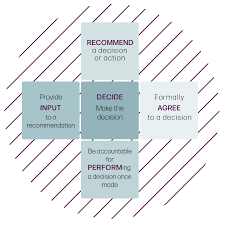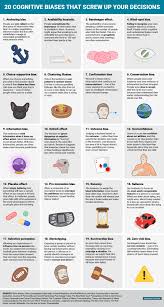Understanding Different Types of Decision Making
Decision making is an integral part of our daily lives, and there are various types of decisions that we encounter. Let’s explore some common types:
Routine Decisions
Routine decisions are those that we make on a regular basis and often do not require much thought or effort. These decisions are typically based on habit or established patterns.
Strategic Decisions
Strategic decisions are long-term decisions that have a significant impact on an individual or organization. These decisions require careful planning and consideration of potential outcomes.
Operational Decisions
Operational decisions are day-to-day decisions that help in the smooth functioning of an organization. These decisions are usually made by middle management and focus on the efficient execution of tasks.
Tactical Decisions
Tactical decisions bridge the gap between strategic and operational decisions. They involve short-term planning to achieve specific objectives within a larger strategic framework.
Programmed Decisions
Programmed decisions are repetitive and routine in nature, with predefined procedures for making them. These decisions are based on established rules and guidelines.
Non-Programmed Decisions
Non-programmed decisions are unique, complex, and require creative problem-solving skills. These decisions often involve high levels of uncertainty and risk.
In conclusion, understanding the different types of decision making can help individuals and organizations approach decision-making processes more effectively and efficiently.
Understanding Decision Making: Types, Differences, and Benefits
- What are the different types of decision making?
- How do routine decisions differ from strategic decisions?
- What are some examples of operational decisions?
- Can you explain the concept of tactical decisions?
- What is the difference between programmed and non-programmed decisions?
- How can understanding different types of decision making benefit individuals and organizations?
What are the different types of decision making?
When exploring the question “What are the different types of decision making?” it is important to understand that decision making can be categorized into various types based on factors such as frequency, impact, and complexity. Common types include routine decisions, which are habitual and require minimal effort; strategic decisions, which are long-term and have significant consequences; operational decisions, which focus on day-to-day tasks; tactical decisions, which bridge the gap between strategic and operational levels; programmed decisions, which follow established procedures; and non-programmed decisions, which are unique and require creative problem-solving. By recognizing these distinctions, individuals and organizations can approach decision making with a clearer understanding of the diverse approaches available.
How do routine decisions differ from strategic decisions?
Routine decisions and strategic decisions differ in their scope, impact, and time frame. Routine decisions are those that we make on a regular basis without much deliberation, often based on habit or established patterns. These decisions are repetitive and have a short-term impact on daily activities. On the other hand, strategic decisions are long-term decisions that have a significant impact on an individual or organization’s overall goals and direction. Strategic decisions require careful planning, analysis of various factors, and consideration of potential outcomes before implementation. Unlike routine decisions, strategic decisions involve a broader scope and a longer time frame, shaping the future trajectory of an entity.
What are some examples of operational decisions?
Operational decisions are crucial for the day-to-day functioning of an organization. Some examples of operational decisions include determining production schedules, allocating resources to specific projects, setting inventory levels, managing customer service processes, and optimizing supply chain logistics. These decisions are made by middle management and focus on the efficient execution of tasks to ensure that the organization runs smoothly and effectively. Operational decisions play a vital role in achieving operational efficiency and meeting the organization’s short-term goals.
Can you explain the concept of tactical decisions?
Tactical decisions play a crucial role in the decision-making process by bridging the gap between strategic goals and operational tasks. These decisions are focused on achieving specific short-term objectives within the broader strategic framework of an organization. Unlike strategic decisions that set the overall direction of an organization or operational decisions that deal with day-to-day tasks, tactical decisions involve planning and implementation to address immediate challenges or opportunities. They require a balance between flexibility and adherence to strategic goals to ensure that the organization can adapt to changing circumstances while staying aligned with its long-term vision.
What is the difference between programmed and non-programmed decisions?
Programmed decisions and non-programmed decisions are two distinct types of decision-making processes. Programmed decisions are routine and repetitive, following established rules and procedures. These decisions are typically made in predictable situations where the outcome is known in advance. On the other hand, non-programmed decisions are unique, complex, and require creative problem-solving skills. They often involve uncertainty and risk, as there may not be clear guidelines or procedures to follow. Non-programmed decisions are made in unfamiliar or unexpected situations that demand innovative thinking and flexibility to arrive at the best possible solution. Understanding the difference between programmed and non-programmed decisions can help individuals navigate various decision-making scenarios effectively.
How can understanding different types of decision making benefit individuals and organizations?
Understanding different types of decision making can benefit individuals and organizations in several ways. By recognizing the various types of decisions, individuals can tailor their decision-making processes to suit the specific situation at hand. This allows for more effective and efficient decision making, leading to better outcomes and reduced risks. For organizations, a clear understanding of different decision-making types enables them to allocate resources appropriately, streamline processes, and align strategic objectives with day-to-day operations. Ultimately, by grasping the nuances of different decision-making approaches, both individuals and organizations can make more informed choices that contribute to their overall success and growth.




